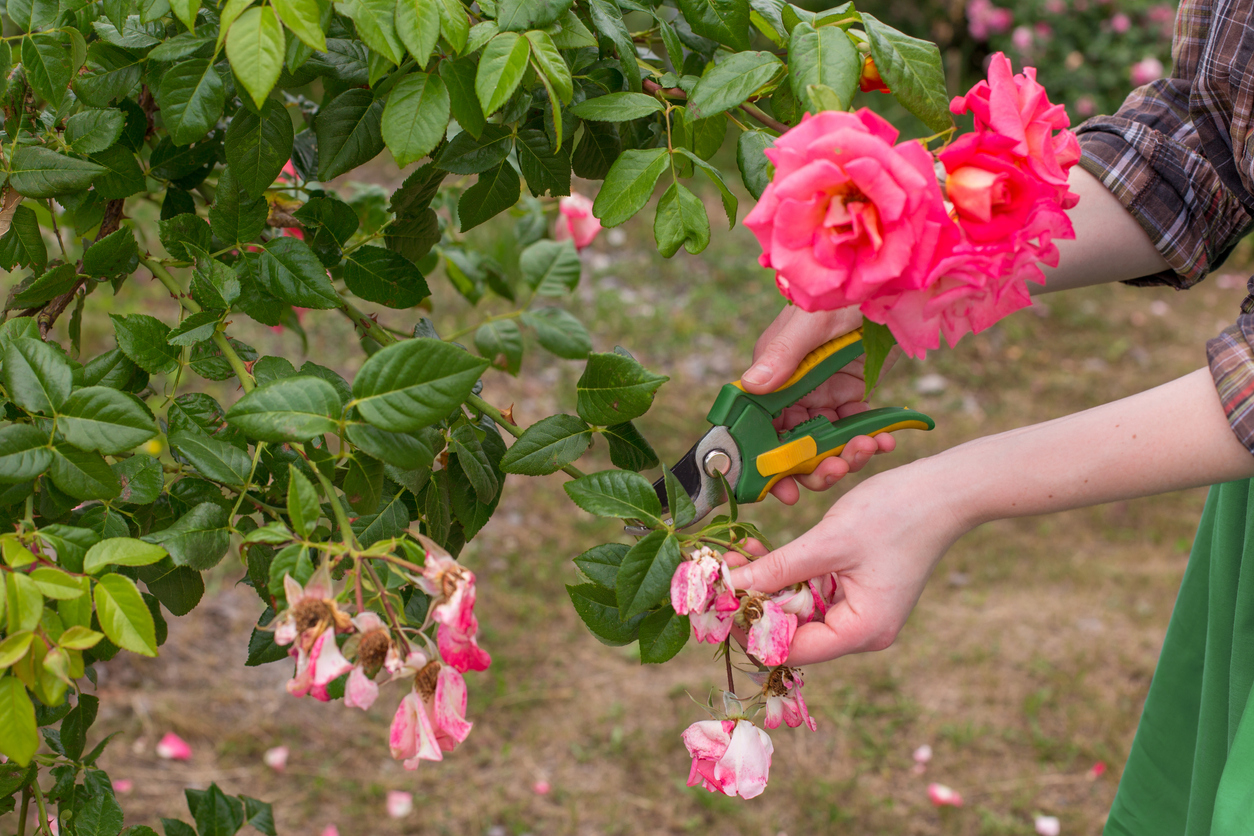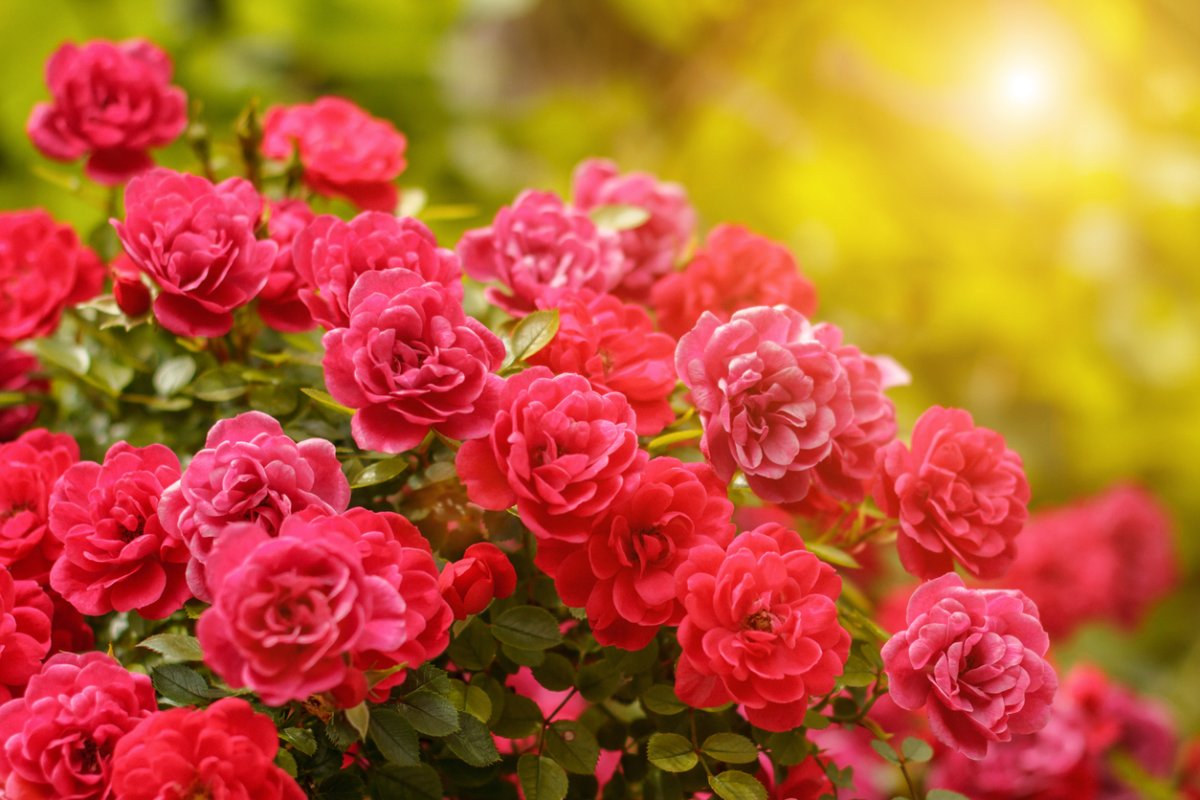We may earn revenue from the products available on this page and participate in affiliate programs. Learn More ›
Q: Last year, we moved into a home with some beautiful rose bushes on the property, but I know very little about how to care for roses. Should they be pruned regularly and if so, when?
Roses have a reputation for being finicky to grow, but regular pruning is necessary to keep them healthy. Pruning will help your plants produce more blooms throughout the season, lessen the chance for diseases to occur, and give you a healthier plant all around.
Although it might seem intimidating to make the first cut, the task is straightforward once you understand the process and when you should do it. Roses only need significant pruning once a year and sometimes a light pruning prior to winter. However, knowing when to prune a rose will depend on its bloom time. If you prune at the wrong time, you will get few to no blooms for the season.
RELATED: 8 Pretty Plants That Stink!
Do a major pruning in the early spring.
In general, most pruning takes place in early spring before the new growth buds swell (bud eyes). However, if you live in a warm climate, that might happen in late winter. Many gardeners time their pruning based on when forsythia shrubs begin to bloom in their area. It’s best to time your pruning based on the variety of rose plants and your hardiness zone. Some types do better if pruned before breaking dormancy.
It’s always best to follow the growing and maintenance recommendations of your specific variety of roses. There are more than 300 species in the Rosa genus and several thousand varieties available. However, roses are often classified into types or categories: old garden roses, wild (species) roses, and modern roses.
Old garden roses and wild roses typically bloom once, and you should prune them in the summer after their bloom cycle has finished. The same goes for most climbing varieties. However, modern shrub roses are bred for multiple blooms and usually do best with spring pruning. Do the research and identify your variety first before you make any cuts.

Cut off dead flowers in the summertime.
Deadheading refers to the removal of spent blossoms. This step ensures that your plant will continue to produce more flowers instead of going to seed, and keeps the overall plant looking tidy. To deadhead, cut off the spent bloom just below where the base of the flower joins the stem.
As the season progresses, you can deadhead further in larger sections. Cut the stem above a 5-leaflet or 7-leaflet branch stem once the cluster of flowers is spent. Deadhead as needed throughout the flowering season to encourage more growth. In the spring or late winter, you can prune to address the overall shape of the rose or dead branches before the next growing season.
Prune all once-blooming types in the early summer.
First of all, identify the correct variety or cultivar you have. Once-blooming types include heritage/old garden roses and wild roses that only bloom once a season. The blooms form on the previous year’s canes. If you prune these varieties in the spring, you remove most or all of the flower buds. Prune once-blooming types right after blooming in early summer.
Once-blooming roses also benefit from deadheading and can be pruned in the same manner as described in the deadheading section above. However, don’t jump the gun on the hard prune. It’s best to wait until the plant has completely bloomed out before making any cuts.
RELATED: How to Prune Roses of All Types

Trim longer stems right after the first frost in the fall.
Pruning roses in the fall is a hot topic for some gardeners. There’s one school of thought that says you should never do so or you will stimulate growth, only to have it die off when the cold weather arrives. Others say the fall season is the perfect time to prune any dead, broken, or diseased branches.
Again, it depends on the specific rose variety you are growing and your climate. For the most part, you can prune away dead, damaged, and diseased stems any time of the year. In the hottest climates, you can encourage a second burst of blooming with a summer prune. Check with local plant experts for timing.
Otherwise, make any cuts on healthy branches late enough in the fall season to avoid causing the plant to send out tender shoots that can’t survive in winter. After the first frost is typically a safe time to prune the stems before the plant heads into dormancy, but it depends on the climate in your area.
Prepare your rose for winter.
Keep up with deadheading as long as your plant continues to produce blooms, but stop about 8 to 10 weeks before your first frost date. This step will help any new growth harden off naturally before winter. Leaving some flowers can encourage development of rose hips, the red balls beneath the flowers that hold the seeds. Let them be; they offer added interest to your fall and winter garden and provide food for birds over the winter.

If your roses are still pretty tall at this point, cut them back to 4 or 5 feet high and then thin out any broken branches to help reduce wind damage in late fall and winter.


